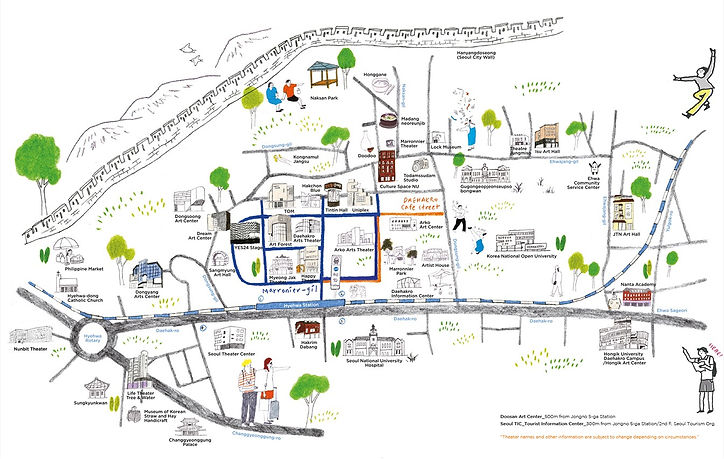Seoul Theatre District
Daehakro is a major “arts & culture street” of Korea with some 150 theaters clustered in the area. Stretching for about 1.6km from Jongno 5-ga in Jongno-gu to the Hyehwa-dong Rotary, Daehakro was designated a “cultural zone” in 2002 and operated as a “no cars zone” on weekends. You can visit many historically and culturally popular sites such as Marronnier Park and Naksan Park, or see and taste the latest trends at the various eateries and shopping facilities.
Daehakro ) is the first cultural street built by the city government that builds on the commercialization of youth and performing arts . The concentration of small theaters was encouraged and place-making efforts of Daehakro began in earnest in 1985 when the Seoul city administration paid attention to the potential of the street as an arts and culture street. Many small theaters were newly opened and some moved in from other parts of Seoul. The share of culture and education activities increased from 13.2% to 18.4%. A rapid increase was also seen in commercial uses such as restaurants, cafes, and bars.
01
Public Investment
02
Capacity
There are many types of performances spaces at Daehakro, ranging from theatres, arts centers, galleries, and small concert halls that have seating capacities ranging from 75 seats to 600 seats.



Other Impacts
Small theaters are an integral part of the city’s performing arts sector. They continue to be a stage for provocative, cutting edge work, and are an invaluable platform for both established and up-and-coming talent, playwrights, and creative production teams.